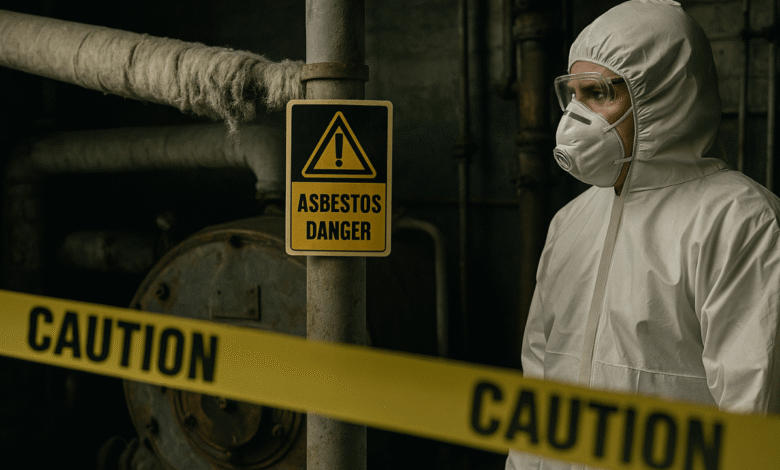Asbestlint: History, Dangers, and Modern Safety Regulations

Asbestlint is a term that often raises curiosity and concern, especially for individuals researching building materials, insulation, or environmental health risks. While the word may not be as commonly recognized as asbestos, it refers to materials and fibers directly linked to asbestos-containing products. Historically, asbestlint has been used to describe asbestos-based tapes, ropes, seals, and lint-like fibers that were widely applied in construction and industry for their heat-resistant properties. Today, however, the word carries a cautionary meaning because exposure to asbestos fibers, including those present in asbestlint, poses significant health risks. This article will explore the background, uses, dangers, and regulatory considerations associated with asbestlint. By understanding its context, you can make informed decisions about safety, handling, and compliance.
The Origin and Meaning of Asbestlint
The term asbestlint typically refers to fibrous or tape-like asbestos materials that resemble lint or rope. During the industrial era of the 19th and 20th centuries, asbestos was celebrated as a “miracle mineral” because of its fire resistance, durability, and affordability. Asbestlint products were marketed as essential sealing and insulation solutions in high-temperature environments.
Over time, asbestine became a generic term for asbestos-based materials that appeared soft, threadlike, or dusty. It was not only used for insulation but also in gaskets, boiler packing, and fireproofing applications. Unfortunately, this seemingly harmless fibrous material is now recognized as a dangerous source of airborne asbestos particles.
Industrial and Household Uses of Asbestlint
Asbestlint found applications in a wide variety of industries. Some of the most common uses include:
- Pipe Insulation: Asbestlint was wrapped around hot water and steam pipes to maintain energy efficiency and prevent heat loss.
- Boiler and Furnace Seals: Its heat-resistant nature made it suitable for sealing furnace doors, valves, and boilers.
- Fireproofing Materials: Industries used asbestlint to produce fireproof cloths, ropes, and protective gear.
- Gaskets and Packing: Asbestlint served as an excellent packing material in high-pressure and high-temperature equipment.
- Textiles and Household Products: In some cases, asbestlint was woven into fabrics or applied in household appliances such as toasters and ironing boards.
Although effective in its original purpose, these uses introduced serious long-term health hazards.
Health Risks Linked to Asbestlint
The most significant concern associated with asbestlint is the release of microscopic asbestos fibers. When disturbed, cut, or worn down, these fibers become airborne and can be inhaled. Scientific research has confirmed that there is no safe level of exposure to asbestos. The health effects associated with inhaling asbestlint particles include:
- Asbestosis: A chronic lung condition caused by scarring of lung tissue.
- Mesothelioma: A rare but aggressive cancer of the lining of the lungs, abdomen, or heart.
- Lung Cancer: Prolonged asbestos exposure significantly increases the risk of developing lung cancer.
- Other Respiratory Issues: Persistent coughing, shortness of breath, and decreased lung function.
Because of these risks, asbestlint is no longer considered safe to use and has been banned or heavily regulated in most countries.
Regulations and Bans on Asbestlint
Governments around the world began restricting the use of asbestos in the late 20th century, once its dangers became undeniable. Asbestlint, being a derivative of asbestos products, fell under the same restrictions.
- In the United States, OSHA and EPA regulate the handling and disposal of asbestos, requiring strict procedures for workplaces and demolition projects.
- European Union: The EU has banned all forms of asbestos, including asbestlint, since 2005.
- Australia and Canada: Both countries implemented total bans on asbestos-containing products, including asbestlint, in the early 2000s.
- Other Regions: Many nations in Asia and Africa are still in the process of phasing out asbestos use; however, global awareness is increasing.
These regulations aim to protect workers, residents, and the general public from accidental exposure to hazardous materials.
Identifying Asbestlint in Buildings
Recognizing asbestos in a building can be challenging because it often resembles ordinary insulation or other fibrous materials. Common indicators include:
- White, gray, or brown fibrous wrapping around pipes or boilers.
- Rope-like sealing material around furnace doors.
- Dusty or lint-like debris near old heating systems.
- Worn-out insulation that resembles textile fibers.
However, visual identification alone is not enough. Laboratory testing is the only reliable method to confirm whether a material contains asbestos.
Safe Handling of Asbestlint
If you suspect the presence of asbestlint in your home or workplace, safety should be your top priority. Here are key steps to follow:
- Please do Not Disturb the Material: Avoid cutting, sanding, or removing it yourself.
- Hire Certified Professionals: Licensed asbestos inspectors and abatement specialists have the training and equipment to handle asbestlint safely.
- Encapsulation vs. Removal: Depending on its condition, professionals may seal asbestlint in place (encapsulation) or remove it entirely.
- Proper Disposal: Asbestlint waste must be double-bagged, labeled, and taken to a licensed disposal facility.
By following these procedures, you minimize the risk of releasing harmful fibers into the air.
Why Asbestlint Still Matters Today
Although asbestlint is no longer produced, many older buildings still contain it. Renovations, demolitions, or even minor maintenance work can disturb these materials, posing a risk to people. Furthermore, awareness of asbestlint is crucial for homeowners, contractors, and workers in construction, plumbing, and heating industries.
As global demand for safe housing and infrastructure grows, understanding the legacy of asbestlint helps ensure safer practices in construction and renovation.
Alternatives to Asbestlint
Modern industries now rely on safer substitutes that provide similar fire resistance without health hazards. These include:
- Fiberglass insulation
- Ceramic fibers
- Mineral wool
- High-performance polymers and composites
These alternatives are non-toxic, more environmentally friendly, and widely available. Their adoption reflects the progress made in eliminating asbestos risks.
Conclusion: The Lasting Impact of Asbestlint
Asbestlint, once considered a valuable and reliable insulation material, is now recognized as a dangerous remnant of the asbestos era. While it played a key role in industrial development, the health risks far outweigh any of its historical benefits. Today, the presence of asbestlint in older structures remains a significant concern, making awareness and caution essential.





